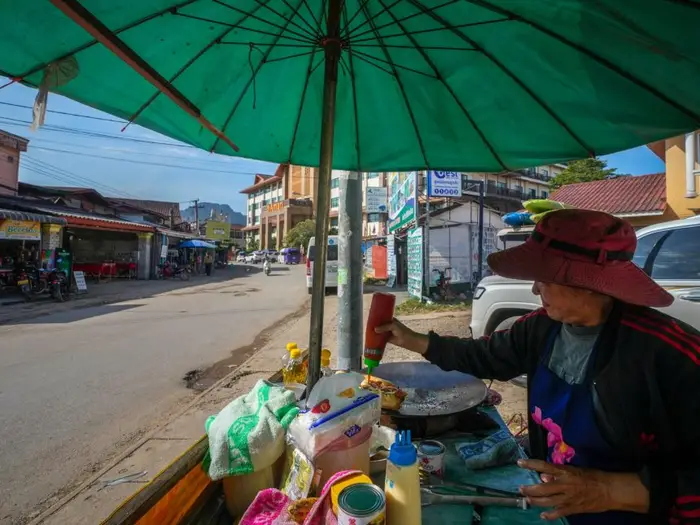Roughly 2 billion folks world wide undergo from some type of undernutrition, sparking debate amongst researchers and coverage makers about easy methods to enhance the diets and diet of weak populations.
A brand new research printed within the journal Nature Meals challenges typical knowledge that farmers’ manufacturing of crop range (meals manufacturing range, or FPD) is the first technique of addressing nutrient deficiencies. .
So what’s the relationship between dietary range and particular person and family diet? And may market entry resolve dietary deficiencies?
What does new analysis present?
The primary-of-its-kind research by Germany’s Heart for Growth Research (ZEF) on the College of Bonn checked out information on roughly 90,000 African households in Ethiopia, Malawi, Niger, Nigeria, Tanzania, and Uganda from 2008 to 2022. collected.
The group recommends that undernourishment will be higher addressed by constructing higher roads to entry markets in native cities and cities.
“We present that regional manufacturing range is essential and may exchange the manufacturing range of particular person farms in lots of conditions,” ZEF’s Professor Matin Kaim informed Al Jazeera. spoke.
“That is excellent news as a result of, moderately than forcing particular person small farms to supply extra seeds, we will be certain that further crops and livestock species are produced elsewhere within the area (after which distributed by way of native markets). “It is a lot simpler to do this,” he defined.
The researchers studied detailed information on the range of crops and animals managed by farmers, in addition to the kinds of meals consumed by every family. On this research, we use the Dwelling Eating regimen Variety Rating (HDDS) to measure the dietary range of a household’s food regimen by aggregating the person meals teams consumed inside every week. The index supplies perception into the vary and high quality of meals consumed by households, offering a snapshot of dietary and dietary standing.
Lots of the farmers surveyed had been small-scale growers, often called smallholders or limited-scale farmers.
The principle questions the researchers wished to reply had been whether or not producing quite a lot of crops and animal species amongst smallholders is the best option to handle dietary deficiencies, and whether or not these farms The query was whether or not households with entry to the system had been consuming a extra balanced food regimen.
Sadly, as analysis reveals, the outcomes are combined.
“Producing too many alternative issues on every farm means farmers are pressured into subsistence and lose out on the advantages of division of labor. However we additionally want to enhance market entry, reminiscent of infrastructure. It additionally reveals that enchancment is essential,” Keim mentioned.
What are the restrictions of older analysis on meals range?
Present research investigating the connection between meals manufacturing range and dietary range have a number of limitations.
As famous within the Nature Meals research, specializing in farm-level manufacturing range and a single nation highlights the potential impression of broader-scale range on family dietary patterns in numerous nations. results are ignored.
Addressing these shortcomings may assist researchers higher perceive the complicated interactions between agricultural manufacturing and dietary outcomes. The variety of native farms led to a extra balanced food regimen for some households, however the impression was minor.
“Small-scale agricultural manufacturing in Africa tends to be extremely various anyway. Guaranteeing good entry to native and regional markets is extra essential than additional enhancing the range of particular person farms.” , mentioned ZEF researcher Thanh Tung Nguyen, who carried out the research in collaboration with Qaim.
“These markets won’t solely permit farmers to promote their surplus meals, but in addition permit them to buy meals that’s in brief provide,” he mentioned in an official assertion.
Poor infrastructure stays a serious impediment, as poor roads can improve journey occasions and doubtlessly trigger merchandise to deteriorate or be broken throughout transport.
Proximity to city facilities, an indicator of market entry prices in rural Africa, had a unfavorable impression in all six nations. In accordance with the research, the typical family lives about 31 km (19 miles) from the subsequent city middle.
How can we higher resolve meals insecurity?
The research means that a part of the issue is the power of native farmers to supply appropriate crops and lift appropriate animals, often called FPD. Nonetheless, FPD is just not the one problem in family diets, as measured by the family dietary range rating (HDDS).
“Climate shocks, outlined because the prevalence of droughts, floods, hurricanes, or associated excessive occasions in the course of the previous 12 months, negatively impression HDDS,” the research mentioned.
“A number of different socio-economic traits are positively related to HDDS: Producing non-food money crops reminiscent of cotton, espresso, tea, and tobacco by yourself farm has a optimistic impression in your money earnings. It appears to be efficient and contribute to rising the range of family diets.”
“The difficulty of dietary resilience to local weather change and different kinds of shocks, and the position of homegrown manufacturing and markets on this regard, remains to be not nicely understood,” researcher Kaim mentioned.
The researchers mentioned the seasonality of sure fruit and veggies ought to obtain extra consideration. To maximise agricultural effectivity and financial potential, farmers ought to prioritize rising crops that thrive in particular areas and soil circumstances, optimizing each productiveness and profitability. Analysis is really helpful.
Efforts are presently underway to handle infrastructure meals accessibility points. In 2016, the United Nations Workplace for Mission Companies (UNOPS), which is devoted to delivering humanitarian help and growth initiatives, launched a $55 million (GBP 44 million) spur challenge in South Sudan to enhance commerce and meals safety. did.
In November, the Nyamler Bridge was handed over to Sudan, together with 44 km (27 miles) of feeder roads, together with clear ingesting water stations and sanitation programs in northern and western Bahr el Ghazal states. The development of the bridge affected and was aimed toward offering reduction to 1.2 million folks within the area.









